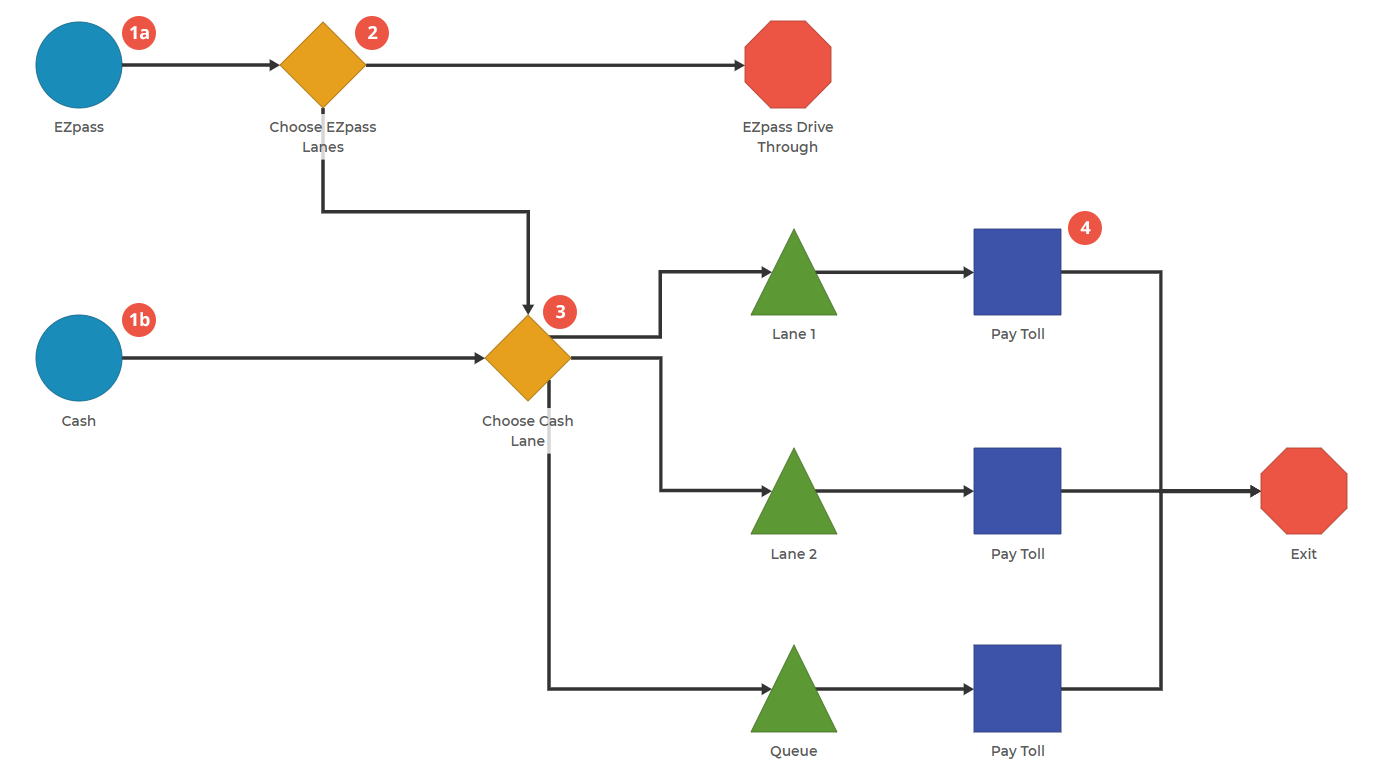Paying at a Toll Booth
Toll Booths. Modeling expected deviations from the norm of the process.

0. This model has two items: EZpass and Cash. These represent vehicles that will use each type of payment.
1. Create the EZpass and Cash Items. Use the Demand Blocks to generate EZpass (1a) or Cash (1b) items. In this model, they have the same demand.
2. Model the Decision of EZpass Drivers In Cash Lanes. This Decision Block splits 5% of the EZpass drivers into the Cash lanes. While it is expected they would go to the EZpass lane, sometimes the reality is different from what's expected.
3. Select Lane Based on Shortest Line. This Decision Block routes the incoming vehicles to the shortest toll booth line.
4. Create Multiple Toll Lanes. There are different toll booths here, which enable you to play around with the parameters.
You can test various scenarios with this setup. What if there's one booth that runs a bit slower? What if there's an accident, and you're suddenly down to two booths instead of three? What if the mix changes and there are fewer EZpass customers than expected?
All of these scenarios can be thought through and accounted for by understanding how your process will respond and setting good countermeasures for dealing with the unexpected changes.
Was this helpful?
